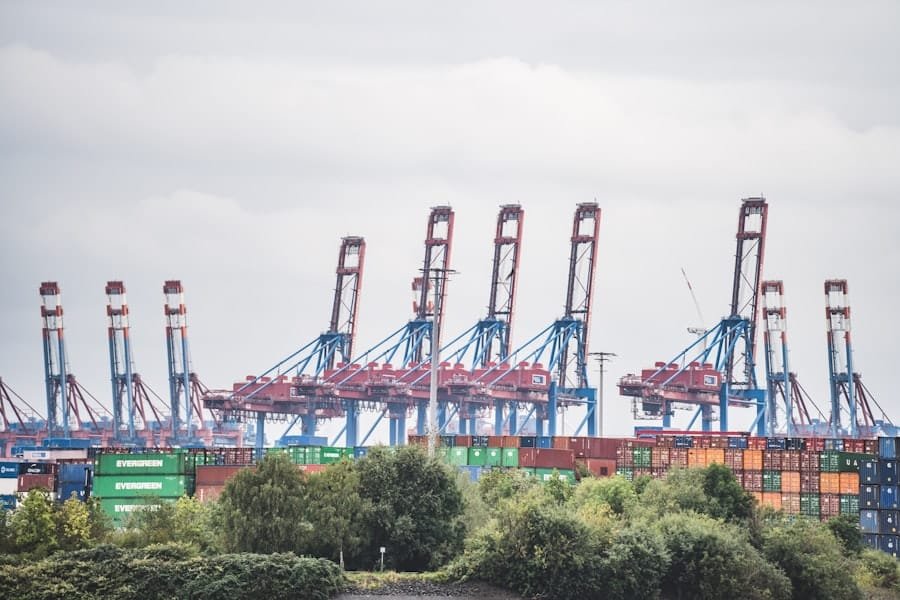In the contemporary landscape of logistics and supply chain management, the Transportation Management System (TMS) has emerged as a pivotal tool for businesses seeking to optimise their transportation operations. A TMS is a software solution designed to facilitate the planning, execution, and optimisation of the physical movement of goods, both incoming and outgoing. It serves as a central hub for managing transportation logistics, enabling companies to streamline their processes, enhance visibility, and improve overall efficiency.
The evolution of TMS has been driven by the increasing complexity of supply chains, the need for real-time data, and the demand for cost-effective solutions in an ever-competitive market. The significance of a TMS cannot be overstated, as it plays a crucial role in ensuring that products are delivered to customers in a timely and cost-effective manner. By automating various aspects of transportation management, such as route planning, carrier selection, and freight auditing, a TMS allows businesses to focus on their core competencies while minimising operational inefficiencies.
Furthermore, with the rise of e-commerce and global trade, the need for robust transportation management solutions has become more pronounced, making TMS an indispensable component of modern supply chain strategies.
Summary
- A Transportation Management System (TMS) is a software solution that helps businesses manage and optimize their transportation and logistics operations.
- Key features of a TMS include route planning, load optimization, carrier management, freight audit and payment, and real-time tracking and visibility.
- Implementing a TMS can lead to benefits such as cost savings, improved efficiency, better customer service, and enhanced visibility and control over transportation operations.
- TMS improves efficiency and cost savings by automating manual processes, optimizing routes, reducing empty miles, and providing real-time visibility into transportation operations.
- Integration with other Supply Chain Management Systems such as Warehouse Management Systems (WMS) and Enterprise Resource Planning (ERP) systems is crucial for seamless data flow and end-to-end visibility in the supply chain.
Key Features and Functions of a TMS
A comprehensive TMS encompasses a variety of features and functions that cater to the diverse needs of transportation management. One of the primary functions is route optimisation, which utilises algorithms to determine the most efficient paths for delivery vehicles. This not only reduces fuel consumption but also enhances delivery times, thereby improving customer satisfaction.
Additionally, a TMS often includes functionalities for load optimisation, which ensures that vehicles are filled to capacity without exceeding weight limits, further contributing to cost savings. Another critical feature of a TMS is its ability to facilitate carrier management. This involves maintaining a database of carriers, evaluating their performance, and selecting the most suitable options based on criteria such as cost, reliability, and service quality.
Furthermore, many TMS solutions offer real-time tracking capabilities, allowing businesses to monitor shipments throughout the transportation process. This visibility is essential for proactive decision-making and helps in addressing potential issues before they escalate into significant problems.
Benefits of Implementing a TMS

The implementation of a TMS can yield numerous benefits for organisations involved in transportation and logistics. One of the most significant advantages is enhanced visibility across the supply chain. With real-time data on shipment status, businesses can make informed decisions and respond swiftly to any disruptions or delays.
This level of transparency not only improves operational efficiency but also fosters stronger relationships with customers by providing them with accurate information regarding their orders. Cost reduction is another compelling benefit associated with TMS implementation. By optimising routes and loads, companies can significantly lower their transportation expenses.
Moreover, a TMS can automate manual processes such as freight auditing and invoicing, reducing administrative costs and minimising errors. The cumulative effect of these efficiencies can lead to substantial savings over time, making a TMS a worthwhile investment for businesses aiming to enhance their bottom line.
How TMS Improves Efficiency and Cost Savings
The efficiency gains realised through the use of a TMS are multifaceted. For instance, by automating routine tasks such as order entry and shipment tracking, organisations can free up valuable human resources to focus on more strategic initiatives. This not only enhances productivity but also reduces the likelihood of errors that can arise from manual data entry.
Furthermore, the ability to analyse historical data allows businesses to identify trends and patterns in their transportation operations, enabling them to make data-driven decisions that further enhance efficiency. Cost savings achieved through a TMS are often realised in several ways. Firstly, improved route planning leads to reduced fuel consumption and lower vehicle maintenance costs.
Secondly, by consolidating shipments and optimising load capacities, companies can minimise the number of trips required to transport goods. This not only cuts down on fuel expenses but also reduces wear and tear on vehicles. Additionally, many TMS solutions offer features for freight audit and payment processing, which help ensure that companies are not overcharged by carriers and that discrepancies are resolved promptly.
Integration with other Supply Chain Management Systems
A TMS does not operate in isolation; rather, it is most effective when integrated with other supply chain management systems. For instance, integrating a TMS with an Enterprise Resource Planning (ERP) system allows for seamless data exchange between transportation and other business functions such as inventory management and order processing. This integration ensures that all departments are aligned and working with the same information, which is crucial for maintaining operational efficiency.
Moreover, integration with Warehouse Management Systems (WMS) can further enhance logistics operations by providing real-time data on inventory levels and warehouse capacities. This synergy enables businesses to coordinate their transportation activities more effectively with their warehousing operations, ensuring that products are dispatched promptly as soon as they are available. The interconnectedness of these systems ultimately leads to improved responsiveness to customer demands and greater overall supply chain agility.
TMS Implementation and Best Practices

Implementing a TMS requires careful planning and execution to ensure its success within an organisation. One of the first steps in this process is conducting a thorough needs assessment to identify specific requirements based on the company’s unique transportation challenges. This assessment should involve key stakeholders from various departments to ensure that all perspectives are considered.
Once the requirements are established, organisations can evaluate different TMS solutions based on their features, scalability, and compatibility with existing systems. Best practices for TMS implementation also include establishing clear objectives and key performance indicators (KPIs) to measure success post-implementation. Training employees on how to effectively use the new system is equally important; without proper training, even the most advanced TMS may fail to deliver its intended benefits.
Additionally, organisations should consider starting with a phased implementation approach, allowing them to gradually integrate the system into their operations while minimising disruptions.
TMS Trends and Future Developments
As technology continues to evolve, so too does the landscape of transportation management systems. One notable trend is the increasing adoption of artificial intelligence (AI) and machine learning within TMS solutions. These technologies enable predictive analytics capabilities that allow businesses to forecast demand more accurately and optimise their transportation strategies accordingly.
For example, AI can analyse historical shipping data to identify patterns that inform better decision-making regarding carrier selection and route planning. Another emerging trend is the growing emphasis on sustainability within transportation management. As environmental concerns become more pressing, companies are seeking ways to reduce their carbon footprints through greener transportation practices.
Many modern TMS solutions now include features that help organisations assess their environmental impact by analysing fuel consumption and emissions data. This shift towards sustainability not only aligns with corporate social responsibility goals but also meets the increasing demand from consumers for environmentally friendly practices.
Choosing the Right TMS for Your Business
Selecting the appropriate TMS for an organisation involves several critical considerations that can significantly impact its effectiveness in meeting business objectives. First and foremost, it is essential to evaluate the specific needs of the business in terms of transportation volume, types of goods transported, and geographical reach. A small business with local deliveries may require different functionalities compared to a large enterprise managing complex global logistics.
Additionally, organisations should consider scalability when choosing a TMS solution. As businesses grow or evolve, their transportation needs may change; therefore, it is vital to select a system that can adapt accordingly without requiring a complete overhaul. Furthermore, assessing vendor support and customer service is crucial; reliable support can make a significant difference during implementation and ongoing usage.
Finally, organisations should seek out solutions that offer integration capabilities with existing systems to ensure seamless data flow across all operational areas. In conclusion, a well-implemented Transportation Management System can transform an organisation’s logistics operations by enhancing efficiency, reducing costs, and improving overall service levels. As technology continues to advance and supply chain dynamics evolve, businesses must remain vigilant in selecting the right tools that align with their strategic goals while adapting to emerging trends in the industry.
If you are interested in learning more about how to develop employees as organisational assets, you may want to check out this article on developing employees as organisational assets. This article provides valuable insights into the importance of investing in your employees and how it can benefit your business in the long run. Just like a Transportation Management System (TMS) helps streamline logistics operations, developing employees can help improve overall organisational efficiency and effectiveness.
FAQs
What is a Transportation Management System (TMS)?
A Transportation Management System (TMS) is a software solution that helps businesses efficiently manage and optimize their transportation and logistics operations.
What are the key features of a Transportation Management System (TMS)?
Key features of a TMS include route planning, load optimization, carrier management, freight audit and payment, real-time tracking, and reporting and analytics.
How does a Transportation Management System (TMS) benefit businesses?
A TMS helps businesses reduce transportation costs, improve delivery performance, enhance visibility and control over their supply chain, and streamline their logistics operations.
What types of businesses can benefit from using a Transportation Management System (TMS)?
Businesses of all sizes and across various industries, including manufacturing, retail, distribution, and e-commerce, can benefit from using a TMS to manage their transportation and logistics operations.
What are the different deployment options for a Transportation Management System (TMS)?
TMS solutions can be deployed as on-premises software, hosted in the cloud, or offered as a software-as-a-service (SaaS) solution, providing businesses with flexibility in choosing the right deployment option for their needs.
How does a Transportation Management System (TMS) integrate with other systems and technologies?
A TMS can integrate with enterprise resource planning (ERP) systems, warehouse management systems (WMS), electronic data interchange (EDI) platforms, and telematics and GPS technologies to streamline and automate transportation and logistics processes.
